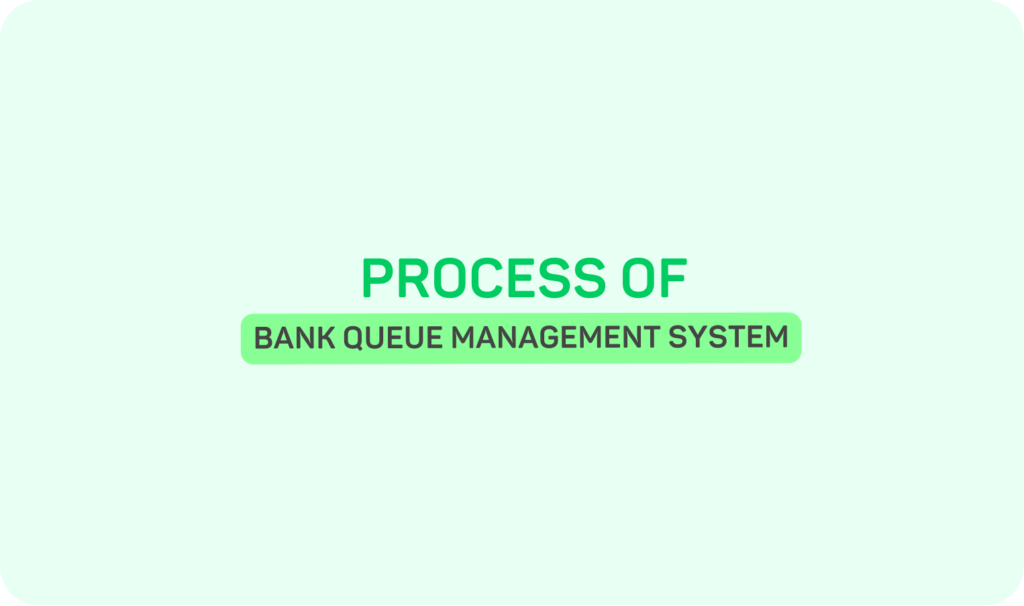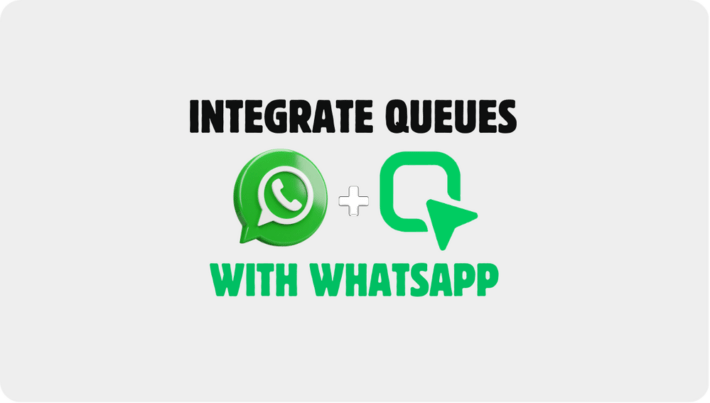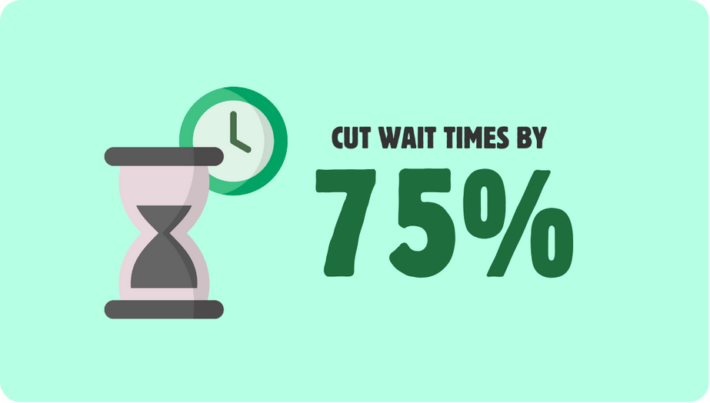عملية نظام إدارة الطوابير في البنوك

Time is of the essence, and efficient queue management is crucial, especially in banks where large volumes of customers are served daily like banks. A Bank queue Management System helps streamline the flow of customers, reducing wait times and improving overall service efficiency. Here’s a step-by-step overview of the queue management process in banks:
Queue Management Process in Banks:
- Customer enters the bank.
- Customer takes a digital token by providing their details.
- Multiple counters call the tokens via speaker announcements and/or display screens.
- Customers may receive SMS or email notifications, allowing them to wait virtually.
- Customer approaches the counter when their token number is called.
- Counters prioritize certain tokens, based on the urgency or nature of the service.
- Counters can skip or cancel tokens if the customer has already left.
1. Customer Enters the Bank
The queue management process begins when a customer enters the bank. To provide a more organized service and reduce crowding, banks often install digital kiosks or terminals near the entrance where customers can enter their details to receive a service token.
2. Taking a Digital Token
Customers take a digital token from the kiosk by entering basic information such as their purpose of visit or account details. This information helps the system assign the customer to the appropriate service desk. The digital token is typically assigned a number or code that corresponds to the customer’s position in the queue.
The token is either printed on a paper slip or sent electronically to the customer’s phone, allowing them to monitor their place in the queue remotely. This system eliminates the need for physical waiting lines and makes the process more convenient for both customers and staff.
3. Calling Tokens at Multiple Counters
Once the token is generated, it enters the queue system. Multiple service counters in the bank are connected to the QMS. Each counter can call the next customer by announcing the token number through speakers or displaying it on digital screens located in the waiting area. Customers can easily track their position by checking the displays or listening for their number.
This reduces confusion and helps maintain a calm, orderly environment within the bank.
4. Virtual Queuing and Notifications
An advanced feature of many queue management systems is virtual queuing. Customers may receive an SMS or email notification regarding their queue status. This allows them to monitor their place in the queue without physically waiting inside the bank. They can arrive just in time when their number is about to be called, enhancing customer satisfaction and minimizing time spent inside the bank.
There are various other benefits of queue management system in banks as mentioned.
5. Customer Approaches the Counter
When a customer’s token number is called, they proceed to the assigned service counter. The counter representative is already prepared, having seen the customer’s basic details and the reason for their visit on their system.
This streamlines the service delivery process and ensures the customer’s needs are quickly addressed.
6. Priority Calling and Token Skipping
Certain tokens can be given priority based on factors such as the type of service required (e.g., urgent withdrawals or senior citizen assistance). This ensures that important or time-sensitive tasks are handled promptly.
Additionally, if a customer has left the bank or fails to approach the counter after their token is called, the counter can skip or cancel their token to keep the queue moving. This avoids unnecessary delays and keeps the system efficient.
This is why every banks need a queue management system, By implementing an efficient Queue Management System, banks can enhance customer experience, reduce waiting times, and optimize staff productivity. This system brings order to an otherwise chaotic process, ensuring smoother operations and improved service delivery.




